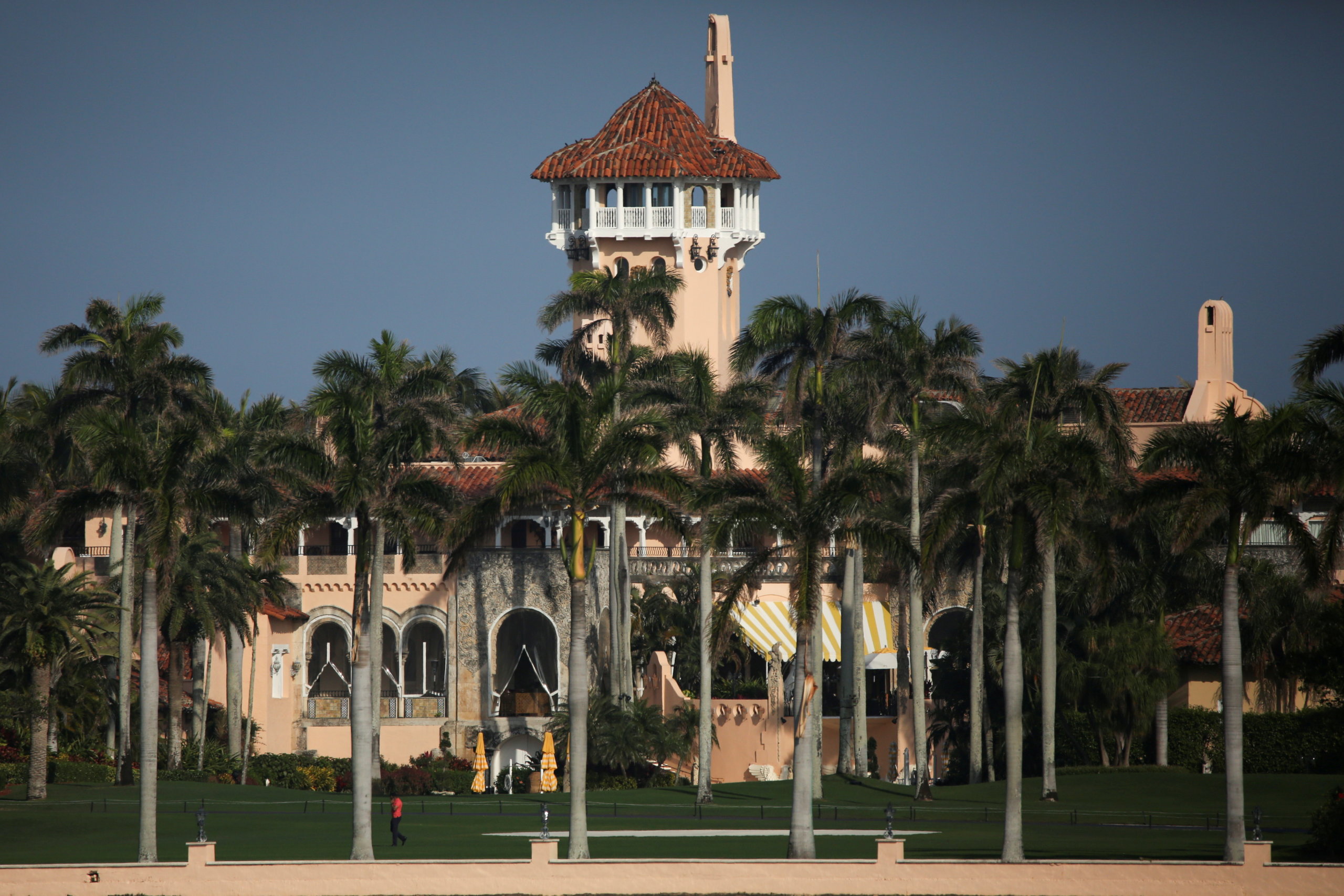Mar-a-Lago: A 1991 Visit to Trump's Luxurious & Storied Club

On Tuesday morning that April, my wife and I were just barely on speaking terms. Over the weekend, we had stayed at what was surely the grandest private residence on the East Coast of the United States, now known as The Mar-a-Lago Club. We had become relaxed, we had gotten very pampered and we were by Monday very used to it. We wanted to move in. But now we were back in our crummy little house in East Hampton. Oh well.
Actually, our house is not so crummy. But any house is crummy after Mar-a-Lago in Palm Beach. Mar-a-Lago, oceanfront at one end and Lake Worth a half-mile away at the other, was built during the Roaring Twenties by Marjorie Merriweather Post, the heiress to the Postum (now Post) Cereal Company fortune, to be about the size of 30 smaller homes. Hundreds of artisans came over from Europe to carve the decorations, statuary and ceilings. Entire walls were taken down in European castles, brought over by freighter and re-constructed on the site. And toward the end, in the fourth year of construction, the cost of the project became so huge that Mrs. Post’s husband, EF Hutton, privately called the architect to see if there weren’t some way to rein in Mrs. Post. She was coming very close to bankrupting not only Post Cereal, which she controlled, but Hutton’s successful stockbroker firm. The architect said he would see what he could do.
Mar-a-Lago ultimately cost $7 million to complete in 1927, which, in today’s money, would be $103 million. It is built in the Spanish Revival style that was popular at the time. Among other things, Mrs. Post ordered many of the doors, ceilings and cornices gilded. But there was not enough gold leaf in America to complete the job. More had to be brought over from Europe to finish it. When it was done, finally, Mar-a-Lago consisted of 85 bedrooms, (about half of which were for servants) 33 bathrooms, a nine-car garage, a theater and a few other amenities. You get the idea.
The way our weekend at Mar-a-Lago had come about was because the current owner, Donald Trump, had invited us. We were standing in tuxedos at some fundraiser at The Plaza Hotel as I recall and he turned to us and said,” You really ought to come down and see Mar-a-Lago some weekend. Just call me up and I’ll arrange it.”
Arranging it, we thought, meant finding a weekend that was convenient for him and then coming on down. I had read extensively about how he had converted it to a private club. I called his secretary in Manhattan and she said there was an opening on the weekend of April 5–6 and that would be fine. We made and paid for plane reservations down, and then the secretary called us back. She had to apologize, she said.
“Normally, Donald’s jet flies down and back,” she said. “But this weekend it has to be in Arizona. Sorry. Mr. Trump asks that you forgive him.”
We said we would.
Mar-a-Lago is not a hotel. You can’t just call up and ask if you can stay in one of the guest rooms. It is, in fact, a club owned by Donald Trump. You pay an initiation fee to join the club — currently $200,000 — and then you are free to use, and pay for, the facilities of the club. These include one of the overnight bedrooms, a stunningly beautiful spa occupying several small buildings and a connecting courtyard, the beach, a private pool, grass tennis courts, the dining room, the patio or the living room, which is available for catered affairs. There was a wedding the Sunday when we were there.
All of this, of course, has to have the seal of approval of the authorities in Palm Beach, and of course it does. Behind a closet door in the second floor Spanish Room where we were put up — two curved balconies, fireplace, tile floor, inlaid and beamed ceiling, all restored as Mrs. Post had designed them — there is the official Palm Beach certificate stating that the room has been inspected and is up to code and the amount charged for a night there is $1,000.
And so, for the weekend, we ate, we hot-tubbed, we took walks, we swam, and we ate again. The food is gourmet. The heavily chandeliered dining room has floor-to-ceiling murals on the walls that Mrs. Post ordered painted in Italy and brought over by boat to be installed here. The scene is of a fishing harbor in a peasant village along the Italian coast.
According to Anthony Senecal, the man who oversees Mr. Trump’s interests at Mar-a-Lago, Trump bought Mar-a-Lago in 1985 at a time when it was beginning to fall into serious disrepair. Mrs. Post had died in 1973 at 86 and had willed the property to the federal government as a residence where they could put up visiting dignitaries. The government used it for that purpose for about five years, but the bureaucrats who maintained it were totally out of their league.
“They painted those beautiful statues at the entry gate, which had been carved by artisans and gilded by Mrs. Post — a bureaucratic brown,” he said.
Upkeep of Mar-a-Lago would cost the government more than $1 million a year to do right. They didn’t do it. And so Mar-a-Lago began to fall back into disrepair. And so the government gave it back to the Post family — who didn’t want it either.
It seems that what Trump might have had in mind when he came in to rescue the place in 1985 — he bought it furnished that year for $10 million, which many believe was a stunningly low price — was to subdivide all the land around it and use the main house as a kind of clubhouse for the buyers. It was the classic thing you do with properties like this. It’s what they did with the Woolworth property down the street.
But when Trump got a good look at it and went over the plans, he turned to Senecal, Senecal told me, and said that if he did this then everybody would have their own estate for a million or so but everybody would know with a glance that there was a bigger and better estate just down the street.
Trump’s real problem was that he fell in love with what Mrs. Post did.
Perhaps next year, 1992, we should start an edition of Dan’s Papers in Palm Beach.



